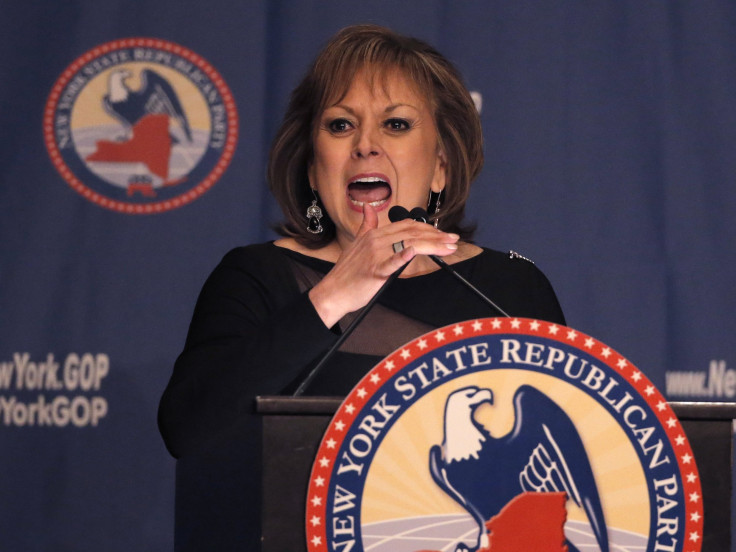How Much Does Wall Street Charge To Manage New Mexico's Retirement Money?

Since 2013, New Mexico taxpayers have paid at least $14.3 million — or nearly $9,000 a day — to nine financial firms whose donors helped bankroll Republican Gov. Susana Martinez’s political apparatus, according to state records obtained by International Business Times. The disclosures emerged as Martinez faced calls for an investigation into possible pay-to-play activity at state investment funds after an International Business Times/MapLight report documented how New Mexico investment deals flowed to donors’ firms.
The total amount New Mexico paid in fees to the nine investment companies, who in total gave more than $1.2 million to political groups backing Martinez, is almost certainly higher than $14 million, as that figure includes only management fees, which generally equal 1.5 percent to 2 percent of the total assets. Those firms also receive performance fees, which can total up to 20 percent of the returns on an investment. But the New Mexico Educational Retirement Board (NMERB), like many pension funds, refuses to disclose the performance fees it pays to investors, despite the fact those investors are managing billions in public money — obscuring what one expert said could be a 50 percent larger total payout.
In response to IBT’s open records request for fee data, the New Mexico Educational Retirement Board blocked the release of documents detailing performance fees.
“Performance fee data for each fund is considered trade secret and therefore exempt from disclosure,” the NMERB wrote to IBT. The seven-member board includes three seats appointed by Martinez, one of which has remained vacant since 2015.
While the total amount of fees the NMERB pays to investors remains hidden from public view, the total is likely somewhere around $21 million, or 50 percent higher than the disclosed total, according to Jeff Hooke, a Johns Hopkins University finance professor who has worked in private equity. Six of the nine donor firms identified by IBT have invested state money into their private equity funds.
Private equity funds, he said, have to reach a certain threshold of returns, usually 8 percent, to receive the 20 percent commission. But the Standard and Poor’s 500 index, which is commonly used as a benchmark for private equity performance, offers average annual returns of roughly 10 percent. Put simply, private equity managers can underperform and still get a fifth of their clients’ profits.
“It’s a good racket if you’re running one of the funds… you’re doing pretty well,” he said.
Last year the NMERB and the State Investment Council paid out more than $300 million in combined fees and carried interest.
On Tuesday, Martinez used a meeting of the New Mexico State Investment Council (SIC) to lash out at IBT and MapLight, deriding last week’s report as “click bait” and not “true journalism,” according to the Associated Press. However, Martinez followed the attacks with an announcement that she now supports removing elected officials from state investment boards. Martinez previously vetoed bipartisan legislation to remove the governor from the SIC, arguing the bill didn’t go far enough in removing politicians from the council. The bill would have let the state treasurer and the land commissioner, both elected officials, remain with the SIC.
The governor’s reversal came less than a week after Democratic State Rep. Bill McCamley, chairman of the New Mexico Finance Authority Oversight Committee, demanded a state investigation into whether the donations to Martinez’s political groups and subsequent state investments violated state and federal anti-corruption rules.
Several days after the IBT/MapLight report was published, NMERB executive director Jan Goodwin wrote an op-ed arguing that the governor does not influence investment decisions but conceding that pension officials are not enforcing anti-corruption rules, which are designed to bar financial firms from donating to officials like Martinez, who control appointments to pension boards.
“The Educational Retirement Board doesn’t police campaign finance laws because it has neither the enforcement authority nor the resources or expertise,” wrote Goodwin.
But now that political contributions are readily available on publicly accessible databases, some experts doubt NMERB’s argument, also espoused by a number of pension funds, that identifying political spending by firms and their members is beyond their capabilities.
“Because of sites like Followthemoney.org and Opensecrets.org, it is actually incredibly easy to search for someone’s name and find what political donations they have given,” Ciara Torres-Spelliscy, a senior research chair and law professor at Stetson College who has researched the SEC’s regulation of political donations, told IBT. “That seems like a particularly weak excuse.”
The IBT/MapLight report detailed how donors associated with financial firms directed the more than $1.2 million of campaign donations to Martinez, an affiliated super PAC and groups like the Republican Governors Association, which has given more money to Martinez’s campaigns than any other group or individual. Those firms received investments from the NMERB and the SIC. While the firms disclosed donations directly to Martinez and the super PAC, they did not disclose large donations to the RGA — even though Martinez has been part of the group’s leadership throughout her two terms as governor, including stints as both vice chair and chair of the group.
© Copyright IBTimes 2024. All rights reserved.




















